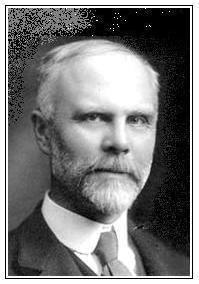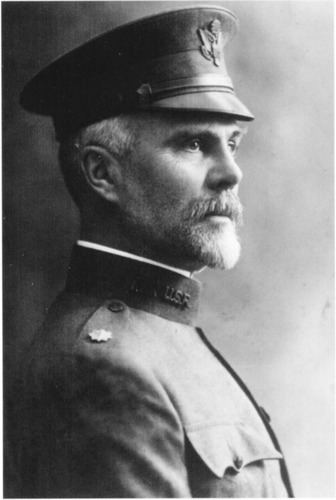Name William Parsons | Alma mater Columbia University | |
 | ||
Born April 15, 1859 ( 1859-04-15 ) Books An American Engineer, Robert Fulton and the Subm, The American Engineer, Engineers and Engineeri | ||
Engineering discipline Civil engineer Organizations founded Parsons Brinckerhoff Practice name Parsons Brinckerhoff | ||
The william barclay parsons fellowship 30 years of technical excellence
William Barclay Parsons (April 15, 1859 – May 9, 1932) was an American civil engineer. He founded the firm that became Parsons Brinckerhoff, one of the largest American civil engineering firms.
Contents
- The william barclay parsons fellowship 30 years of technical excellence
- 150th Anniversary Symposium Columbias Engineering Renaissance Cities 02
- Early life
- Career
- Military Experiences
- Personal life
- Descendants
- Publications
- References

150th Anniversary Symposium: Columbia's Engineering Renaissance. Cities. 02
Early life
He was the son of William Barclay Parsons (1828–1887) and Eliza Glass Livingston (1831–1922). His siblings included Schuyler Livingston Parsons (1852–1917), who's son was married to Betty Bierne Pierson, Harry De Berkeley Parsons (1862–1935), and George Burrington Parsons (1863–1939).
His maternal grandparents were Ann Eliza (née Hosie) Livingston (1805–1838), and Schuyler Livingston (1804–1861), a descendant of Walter Livingston, who ran a line of clipper ships from the New York harbor named Barclay & Livingston. His paternal grandparents were William Burrington Parsons (1794–1869) and Anne Barclay (1788–1869). He was the great-grandson of Henry Barclay, second Rector of Trinity Church in Manhattan.
In 1871, he went to school in Torquay, England, and for the four years following studied under private tutors while traveling in France, Germany and Italy. Parsons received a bachelor's degree from Columbia College in 1879, and a second from Columbia's School of Mines in 1882. As an undergraduate, he served as class president, president of the Philolexian Society and, in 1877, co-founded the Columbia Daily Spectator. Spec was a literary magazine in Parsons' age; now it is the second-oldest continuously operating college news daily. He later served as chairman of the University's board of trustees.
Career
From 1882 to the end of 1885, he was in the maintenance of way department of the New York, Lake Erie and Western Railroad. His first books had to do with railroad problems (Turnouts; Exact Formulae for Their Determination, 1884, and Track, A Complete Manual of Maintenance of Way, 1886), and this interest in rail transportation continued throughout his life.
Parsons designed the Cape Cod Canal as Chief Engineer. He was also Chief Engineer of the Board of Rapid Transit Railroad Commissioners, and as such responsible for the construction of the Interborough Rapid Transit (IRT) subway line.
In 1900, he published an account of his work as Chief Surveyor of China's Canton–Hankou Railway. "...Parsons, acting for an American syndicate, accepted the direction of a survey of 1,000 miles of railway in China, primarily on the line from Hankow to Canton." The party passed through the then "closed province of Hu-nan, and the success of the entire venture depended not alone on the engineering skill but primarily upon the ability of the leader of the expedition to meet the extremely difficult diplomatic problems involved." Nevertheless, the mission was accomplished and the small group of American engineers, to the surprise of many of their friends, returned in safety. Parsons told the story of this adventure in An American Engineer in China" (1900).
In 1904, he was appointed to the Isthmian Canal Commission by President Theodore Roosevelt. In early 1905, Parsons traveled to Panama as a member of the committee of engineers which then favored a sea-level canal. Also in 1904, he was also appointed, along with Sir Benjamin Baker and Sir John Wolfe-Barry, both British engineers, to a board which approved the plans of the Royal Commission on London Traffic.
"In 1905, he had also been appointed chief engineer of the Cape Cod Canal. Completed in 1914, it joined Massachusetts Bay and Buzzards Bay and demonstrated that a canal without locks could be built between two bodies of water where considerable tidal differences existed."
A part of 158th Street in Queens was named after him as Parsons Boulevard, giving rise to the station names Parsons Boulevard and Jamaica Center – Parsons/Archer.
Military Experiences
He was commissioned as a colonel in the Spanish–American War, and promoted to General in World War I.
William Parsons was the Colonel of the 11th Engineers of the American Expeditionary Force (AEF) in France during World War I. "He participated in the engagement at Cambrai, where, suddenly attacked by Germans while making railroad repairs, the engineers fought with picks and shovels. The 11th Engineers also fought in the Lys Defensive (Hundred Days Offensive), and during the Saint-Mihiel (Battle of Saint-Mihiel) and Meuse-Argonne Offensive. His book, The American Engineers in France (1920), is a valuable and interesting record of these activities. He was cited for "specially meritorious services" and received decorations not only from the United States, but also from Great Britain, France, Belgium and the state of New York."
"The Americans were busy on the morning of November 3, 1917, building a railroad yard near the British front, when they were surprised by a sudden German advance. Without a moment's warning, the Germans concentrated a heavy artillery-fire on the yard. Lieutenant McLoud collected his men and calmly marched them through the German barrage to a point of safety. They had retreated about two miles, when they chanced upon a number of British soldiers. McLoud at once took command and, rallying the troops, returned to the firing-line. On the way back the Americans met a British staff officer, and with his aid they succeeded in getting additional arms and ammunition with which to equip the engineers of the party."
"After the war, he was transferred to the Engineers Reserve Corps with the rank of Brigadier General."
Personal life
On May 20, 1884, Parsons married Anna Dewitt Reed (1858–1958), daughter of Rev. Sylvanus Reed (1821–1870) and educator Caroline Gallup Reed (1821–1914), and the sister of Sylvanus Albert Reed, an aerospace engineer who developed the modern metal aircraft propeller. Her grandfather was Albert Gallup, the treasurer of Albany County. Together, they had two children:
Parsons died on May 9, 1932 in New York City.
Descendants
His granddaughter, Sylvia Weld (1909–2002), married Albert Bigelow (1906–1993) on September 10, 1931.
